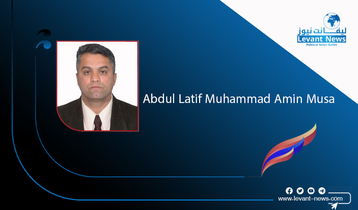-
Once upon a time in Iraq
Last week, when temperatures in Baghdad and elsewhere in Iraq soared to 49 degrees (and above), BBC Weather reported on the extreme heat and commented “Mostly Sunny.” Responding on Twitter, someone tweeted wittily: “There are many Shias too.”
Speed of response matters more than originality on social media. The sectarian cliché/quip wasn’t especially funny, but it was a painful reminder of the gripping documentary I have been watching cataloguing the 2003 war, the overthrow of Saddam Hussein and the lasting consequences for Iraq, the Middle East and the world.
What is unusual about the five-part series, entitled “Once Upon A Time in Iraq”, directed by James Bluemel, is that it interviews ordinary people – Iraqis, supporters and opponents of Saddam, American soldiers, journalists and an Isis fighter – and not just leaders, analysts and policy-makers justifying or explaining the intervention –at the time or retrospectively.
Basic facts are not omitted: George Bush appears claiming “mission accomplished” on the deck of US Navy aircraft carrier in May 2003; and there are clips of his ally Tony Blair. Saddam’s trial and subsequent execution are covered too. But it is the reporting from the ground that makes this film an impressive and harrowing achievement. And it covers the rise of Isis/Daesh with the takeover of Mosul in 2014.
Episode 1 opens with footage from a 2003 US-Iraqi TV show involving two groups of teenagers, in Baghdad and in New York, discussing the looming conflict. On the Iraqi side, 18-year-old Waleed Neysif says, “Let’s live a happy life, and let’s rock and roll.” Neysif loves all things American – MacDonalds, blue jeans, heavy metal music – and confesses that he was initially excited at the prospect of war.
But Neysif, who speaks impressively fluent English (and earned a lot of money working as an interpreter with foreign media), was also deeply shocked by what he witnessed. He filmed himself picking through the rubble after a family home was destroyed by American helicopters and all except the father were killed.
Another fascinating figure is Rudy Reyes, a super-muscular US marine who admits to killing Iraqi women and children who drove straight through a roadblock, and speculates that they were illiterate. Was it worth it, he is asked? “Yes it’s worth it,” he answers, but then pauses. “I mean it has to be worth it.” Another pause. “What’s the alternative?”
Episode 2 is dominated by Lt-Col Nate Sassaman, a charismatic character who defined his Iraq mission as being to keep the peace, rebuild the country and met with tribal leaders towards that end. “In the early days, I think we were trying to go in there and make it right for the folks,” he said. “Doing the noble thing.”
But as insurgent attacks mounted, Sassaman’s war stopped being a reconstruction mission, and was transformed into angry retribution for the killing of one of his men in an ambush. He then ordered his soldiers to raid every home, humiliating and assaulting the men and terrifying the women and children.
Support for Saddam is explained by a former adviser with a walrus moustache who still dreams of his beloved leader. And also by a US soldier who guarded him while in prison and was impressed by him. John Nixon, the CIA analyst who interrogated Saddam, recalls his powerful and domineering character.
The overall effect of the series is to present Iraqis as ordinary human beings: a case in point is the comedian and journalist Ahmed Albasheer, who is visibly upset on camera when describing how his brother died when a mortar shell landed on his head, Alaa, who was blinded in one eye after a car bomb explosion, is another. She has never recovered.
Albasheer also recounts how a 17-year-old suicide bomber, whose father and brother had been killed by the Americans, shaking and shouting “allahu akbar”, blew himself up in a revenge attack, killing 12 of his friends.
The effect of the 2003 invasion is still being felt. Iraq’s grim domestic situation is one illustration, as is the malign influence of Iran. And the wider implications are still being felt:
Barack Obama’s withdrawal in 2011 are one factor in the US failure to respond to Syria’s crisis in 2013, as are Donald Trump’s disruptive “America First” policies.
“The Americans didn’t bring freedom, they brought chaos,” states Omar Mohammed, the historian and blogger who founded the Mosul Eye – in a matter-of-fact way. Long-time critics of the Iraq war have warmly welcomed the clarity of this imaginative film.
In 2012, when Naysif returned to Baghdad for the first time in 9 years, he held an emotional reunion with his family. But he also recounts how an old friend flatly refused to meet up with a Sunni acquaintance of both of them –because of the toxically divisive effect of sectarianism. A Sunni woman also describes how her village hid 900 Shia army cadets whose lives were threatened by Isis after the Camp Speicher massacre near Tikrit. “Once Upon a Time in Iraq” makes crystal clear that sectarian prejudice is no laughing matter.
IAN BLACK
You May Also Like
Popular Posts
Caricature
BENEFIT Sponsors BuildHer...
- April 23, 2025
BENEFIT, the Kingdom’s innovator and leading company in Fintech and electronic financial transactions service, has sponsored the BuildHer CityHack 2025 Hackathon, a two-day event spearheaded by the College of Engineering and Technology at the Royal University for Women (RUW).
Aimed at secondary school students, the event brought together a distinguished group of academic professionals and technology experts to mentor and inspire young participants.
More than 100 high school students from across the Kingdom of Bahrain took part in the hackathon, which featured an intensive programme of training workshops and hands-on sessions. These activities were tailored to enhance participants’ critical thinking, collaborative problem-solving, and team-building capabilities, while also encouraging the development of practical and sustainable solutions to contemporary challenges using modern technological tools.
BENEFIT’s Chief Executive Mr. Abdulwahed AlJanahi, commented: “Our support for this educational hackathon reflects our long-term strategic vision to nurture the talents of emerging national youth and empower the next generation of accomplished female leaders in technology. By fostering creativity and innovation, we aim to contribute meaningfully to Bahrain’s comprehensive development goals and align with the aspirations outlined in the Kingdom’s Vision 2030—an ambition in which BENEFIT plays a central role.”
Professor Riyadh Yousif Hamzah, President of the Royal University for Women, commented: “This initiative reflects our commitment to advancing women in STEM fields. We're cultivating a generation of creative, solution-driven female leaders who will drive national development. Our partnership with BENEFIT exemplifies the powerful synergy between academia and private sector in supporting educational innovation.”
Hanan Abdulla Hasan, Senior Manager, PR & Communication at BENEFIT, said: “We are honoured to collaborate with RUW in supporting this remarkable technology-focused event. It highlights our commitment to social responsibility, and our ongoing efforts to enhance the digital and innovation capabilities of young Bahraini women and foster their ability to harness technological tools in the service of a smarter, more sustainable future.”
For his part, Dr. Humam ElAgha, Acting Dean of the College of Engineering and Technology at the University, said: “BuildHer CityHack 2025 embodies our hands-on approach to education. By tackling real-world problems through creative thinking and sustainable solutions, we're preparing women to thrive in the knowledge economy – a cornerstone of the University's vision.”
opinion
Report
ads
Newsletter
Subscribe to our mailing list to get the new updates!



















